The e-learning industry remains on the rise for a few years in a row and offers more diverse and comprehensive knowledge in various areas. There is a colossal range of formats and learning materials: from video tutorials and extensive masterclasses to high education ending in a Master’s degree. Such lessons, courses, and all of the different kinds of training materials may be conveniently presented to the audience via digital educational spaces—Learning Management Systems.
If you are a business person, now would be a proper time to use this booming trend in software development to your favor and build your own LMS. Custom LMS development services providers can help with that. This article will explain the nuances of the software development process, will provide the readers with clear instructions that will allow them to conduct everything in the most productive way, and will explain what financial benefits one can expect from your own learning management system.
Two Use Scenarios for Learning Management Systems
Selecting custom learning management system development is driven by the ability to have maximum control over the educational platform. This involves the students, types of content, programs, assessment tools, administrators, certification, user interface, tutors, and all the features you think should be included. Ultimately, LMS software functions as a core of an e-learning system. So, if you’re planning to create a platform for modern online learning, you won’t succeed without a good LMS. The prediction for the LMS market growth in North America only proves the point.
However, this reason needs additional details. Namely, when exactly do you require an e-learning solution with the integrated LMS? Most popular cases would be these two:
- The e-learning platform is a business project available for any user on the web. Its revenue model revolves around granting paid access to a diverse range of courses and valuable educational materials..
- The e-learning platform is designed to train the workers of a particular company and is not intended for public access. That’s why it has different priorities, size, and implementation requirements.
Both generally available LMS systems and software for corporate training are beneficial in different ways.
Using LMS for an E-learning Service
The first case implies getting financial payments for providing and array of services related to education and/or upskilling. In other words, a learning management system is a foundation for an online school. The company that owns this kind of SAAS LMS hires tutors, promotes the courses and online training techniques with ads and other marketing methods, controls the capacity of the LMS platform to handle the number of students, and performs other business management routines.
This approach implies that the LMS system belongs to a business enterprise that provides educational services. The ultimate goal of the company that is willing to own LMS platform is to create as large of a target audience as possible and ensure learner engagement and brand loyalty by offering effective training content. As such, the company monitors the existing trends and creates corresponding courses and programs to satisfy the current and predicted demand. It also selects the most advantageous way of conducting a particular course in terms of duration, types of instructional materials, pricing, etc.
According to recent trends, online schools built on learning management software are gaining more popularity every year. The array of educational platforms plus the diversity of courses allow a wide selection of subjects and skills for modest prices. Consequently, custom LMS implementation services can be considered a smart investment in business success.
Using LMS for Learning & Development Departments
The second case of LMS creation is less straightforward. Any business enterprise that wants to succeed must understand the importance of a well-educated staff. More and more companies nowadays encourage their personnel to improve themselves by compensating tuition costs or offering some privileges for degrees and certificates. Others use a more effective and targeted solution – a custom-made LMS and specially designed educational courses for employee training.
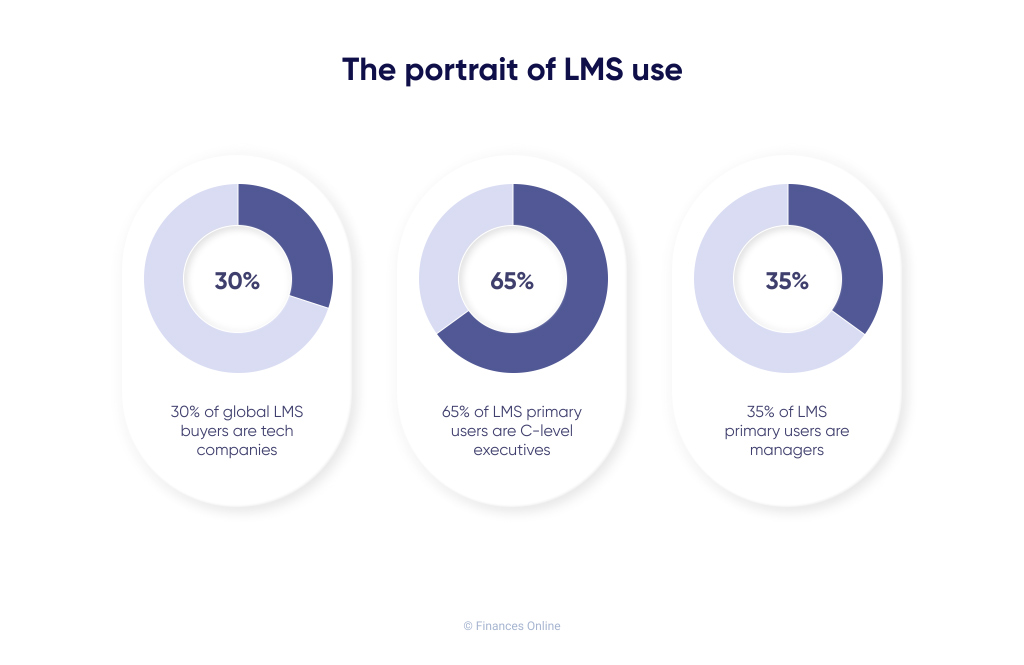
This approach ensures that the staff training program provides the full volume of necessary knowledge in a “concentrated” form and time-efficient manner. Custom LMS development also helps to restrict access from the outside to certain corporate information, as the LMS solution and training content are available only to authorized personnel. In this scenario, the Learning and Development departments take charge of overseeing and guiding the learning process, actively sharing pertinent data with other organizational units. This ensures a collaborative approach to learning, fostering a seamless exchange of insights and knowledge across various departments.
Conversely to the “public” online schools, the number of L&D departments that use a learning management system is gradually decreasing. However, the importance of education remains undisputed, and many companies, especially large corporations, will continue to use a custom learning management system to train at least their high-rank employees.
5 Takeaways to Build an Effective K-12 Learning Management System
If you’re not from the US or Canada, you may not be familiar with the term K-12. In a nutshell, it’s a term for the primary and secondary education process. And as K-12’s aim is to equip students for college and future jobs, both the educational process quality and its diversification are vital.
The global pandemic forced educational institutions worldwide to take a closer look at different ways to set up a comfortable online learning process, and the demand for comprehensive K-12 LMS solutions is now higher than ever, even though the world got back to normal pretty quickly once the restrictions were lifted.
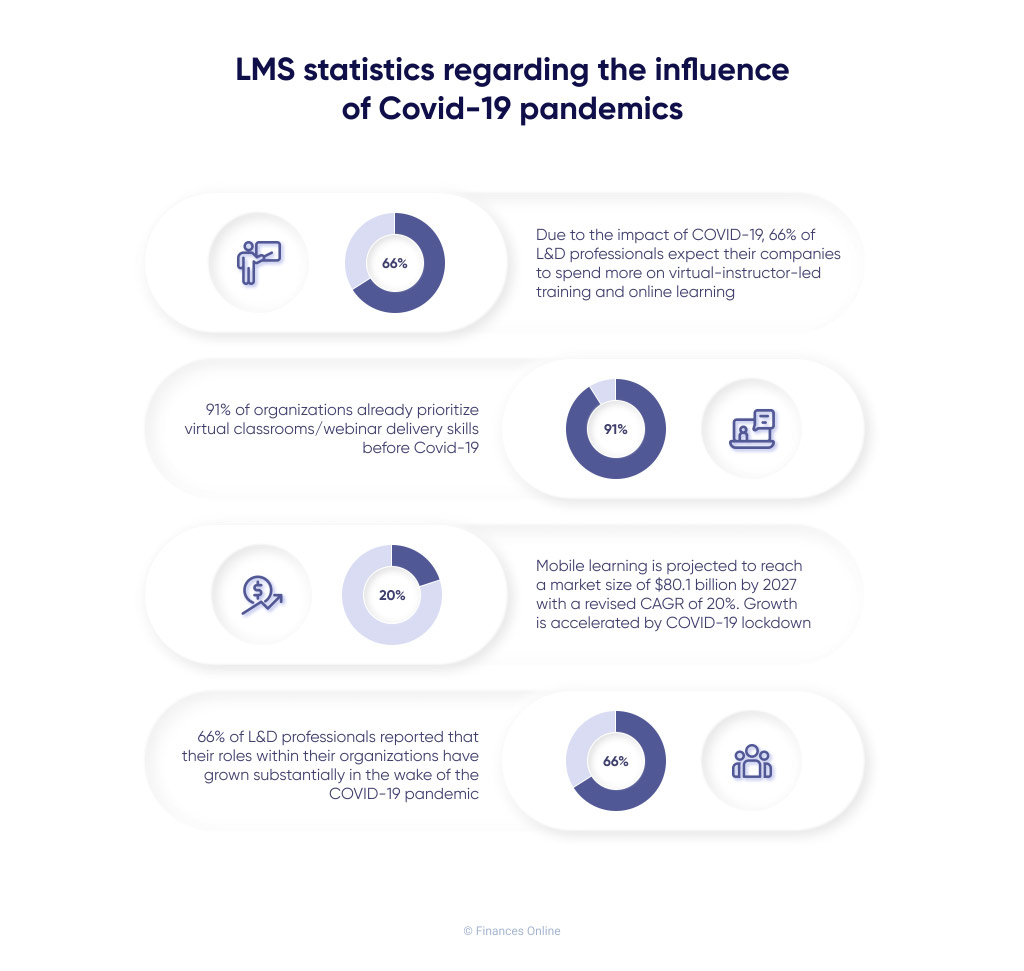
Here are five ways you can ensure learning management system development to capture a market share.
Comprehensive Third-party Services Integration
Modern LMS is a multifunctional hub that offers a number of different learning programs and online courses to each user. It might be a good idea to investigate the market and include the most popular third-party software into the custom LMS.
And if your plan is to build a platform for a particular school, find out which programs the school is already using and make sure to include those into the LMS.
Third-party integrations may not be viewed as core features of a learning management system, however, if chosen and implemented correctly, they make the whole educational experience and/or training process much easier and more successful for the customer.
One Login — All the Functionality
It might not be the greatest idea to split up an LMS into several different portals (one for students, one for teachers, one for parents). The whole point of the Learning Management System is to provide all the required information via a single piece of software, a multifunctional learning portal. Various logins/portals won’t be a competitive gain. On the contrary, such an LMS implementation approach may lead to less stability in the future as the more software you have, the higher the chance of something going wrong with it at one point or another.
Support the Most Popular Multimedia Formats
An effective LMS has to be multifunctional and help the educational process to be engaging and divergent. Therefore, both the students and the staff have to have the ability to upload and interact with various multimedia formats. Text, video, audio, photos, you name it! Such functionality is essential not only for engagement purposes but also to ensure handling multiple business processes at once (e.g. onboarding, digital learning itself, course management, course improvement, etc.)
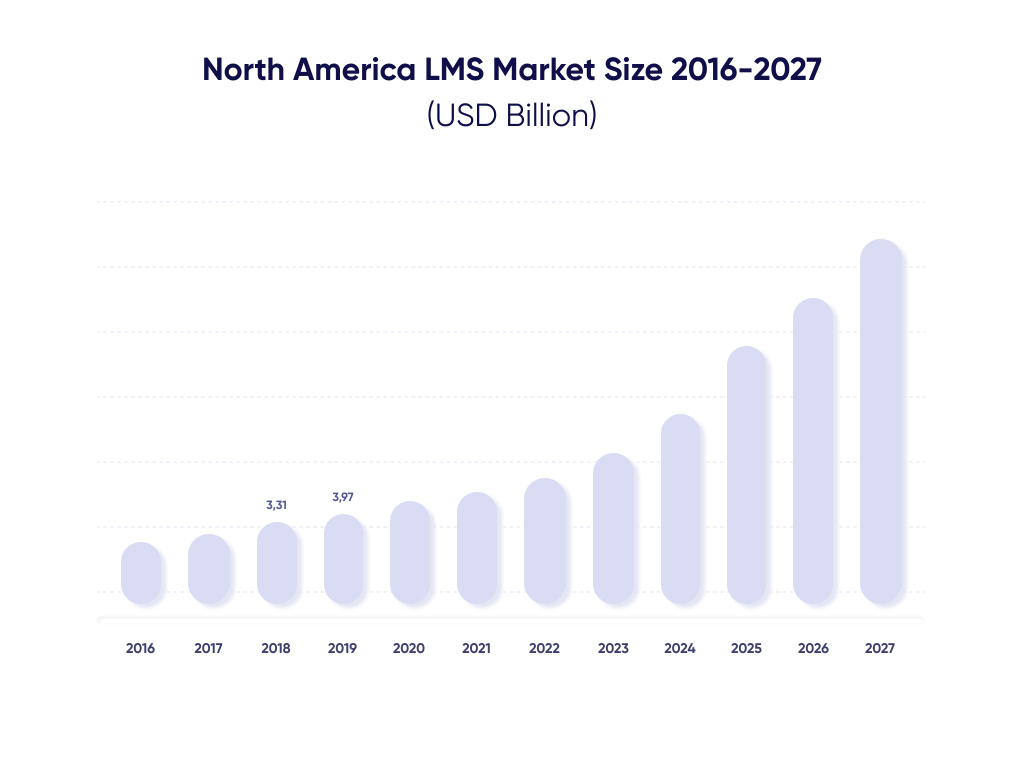
More options for customization
A successful implementation of an LMS platform ends in providing the customer with a customizable LMS system. Every teacher has a specific approach and would love to have access to some kind of tools that would help personalize the learning experience for the students. Customization is also essential for ensuring equal access to the online training platform. Don’t forget that students with special needs may not be able to learn the same way or at the same speed as their able-bodied peers and may require specific educational materials.
Opt for tools ensuring authenticity
While this item isn’t a matter of life and death for LMS implementation, it’s a nice strategic move to equip the platform with several tools to help teachers determine the authenticity of the students’ work. It might be a trustworthy automated plagiarism checker for texts and pictures or a Locked Browser to prevent cheating. Bespoke LMS implementation offers a ton of various options!
Such LMS features are especially relevant today, as AI-based tools like ChatGPT are actively used by younger demographics. A report by Statista has shown that in 2023 users under 34 form over 60% of ChatGPT userbase. And, as time goes by, the percentage of younger audiences will grow even more, so the need for authenticity checking tools as LMS essential features will increase as well.

7 reasons to choose custom LMS development
Nowadays, there are hundreds of ready-made LMSs available in the education industry. Each of them will have various pricing plans and different LMS features that may actually meet the company’s business goals. So, one of the main questions in regard to Learning Management Systems is “Why should I use a custom LMS?” As with most customized solutions, there are several common reasons why custom software development is a better option for a business owner who’s willing to build an efficient LMS than generic software would be.
1. Freedom and self-sufficiency
This is a core advantage of any custom software. If you’re developing your own LMS system, you are free to select the features, create courses, define target audiences, choose the design, and many other aspects of your future software. You are not limited by the constraints of a third-party platform and have full control over the entire development process. The only limitation is the budget reserved for your custom LMS.
2. Tailored functionality
A custom LMS can be built strictly according to your specifications that result from your idea of a learning platform. Generic solutions often contain too many features to cover the needs of larger audiences. There is a high chance that at least some of them will be redundant or completely useless for your LMS project.
The opposite situation is also possible: a generic solution may lack the required functionality, even in the form of an additional paid module. And there’s not much you can do about it, as an off-the-shelf learning management system won’t let you make any changes in the code. So you’ll have to take it and run with it. However, if you opt for bespoke learning management system development, you won’t have such a problem.
3. Performance and size optimization
This is the logical continuation of the previous benefit. An LMS created according to your specification will contain only useful modules, so its size and performance will be optimized. The minimized length of code is also helpful for better testing of the solution, allowing QA specialists to detect and correct mistakes faster and easier. This is a huge improvement over ready-made software, where you can report the found errors but cannot control the bug-fixing process.
4. Well-matched scalability
Generic software often has the “one-size-fits-all” concept to ensure maximum versatility. When you build an LMS from scratch, you always go through the business analysis phase (if not, a custom LMS development company you’ve chosen as your LMS vendor is not proficient or trustworthy enough to complete the task successfully). During the BA stage, you’d have to determine at least an approximate number of students that would be using your LMS system.
Besides, with the help of specialists, you’ll create a business strategy to carefully predict the growth of users based on calculations and analysis of trends and market. That’s why, if you opt for your own LMS, you can include the desired capacity and proper levels of vertical and horizontal scalability before the start of the actual LMS implementation.
In the realm of LMS scalability, it encompasses the capacity to expand educational services to an increasing student base. Simultaneously, it involves seamlessly incorporating new learning materials, topics, lessons, courses, and programs into the online learning platform.
5. Tight security
Using a ready-made learning management solution for business means relying on a third party in many crucial and sensitive aspects. An LMS built and available exclusively for your needs is generally better protected from unauthorized access and other malicious actions than generic solutions. This is especially true in the case of open-source software where the source code and its vulnerabilities are known to the public. You may include as many additional security measures as you want if you have enough money to fund their implementation and choose professionals who are skilled enough to execute every aspect of software development at a high level.
6. Corporate branding and convenient design
Exclusive branded software adds prestige to the brand that owns it. Such attention to detail shows that the company understands the importance of education and social learning and implements a personalized approach instead of relying on existing services. It is a viable marketing move and a good way to emphasize the company is interested in its professional development as well as employee and customer training.
Moreover, bespoke software development helps to create a truly convenient and intuitive user interface for anyone using the platform. Off-the-shelf software more often than not is tricky to master exactly because the interface is overcomplicated or just poorly executed. With a custom LMS project a business owner can make sure it won’t happen to their audience and the training process will be smooth.
7. Better user experience and support
A tailored LMS is more convenient to use for both mentors and students than an off-the-shelf system. It is the result of a carefully selected set of features, corporate-inspired design, and optimized performance.
Another highly important aspect is the improvement of customer support when an LMS is supervised by the company’s system administrators, development teams, tech support, and other designated professionals.
Sometimes, the users of third-party LMS systems report existing issues to the tech support and receive the answer “the problem is not on our side, check your computer/network connection/software updates, etc.” In case of a custom LMS, tech support is more responsible and helpful in solving the problems because the users are their colleagues and the LMS is the property of their company. Moreover, the downtime in case of any kind of technical difficulties is also lower for a bespoke distance learning system than a generic one.
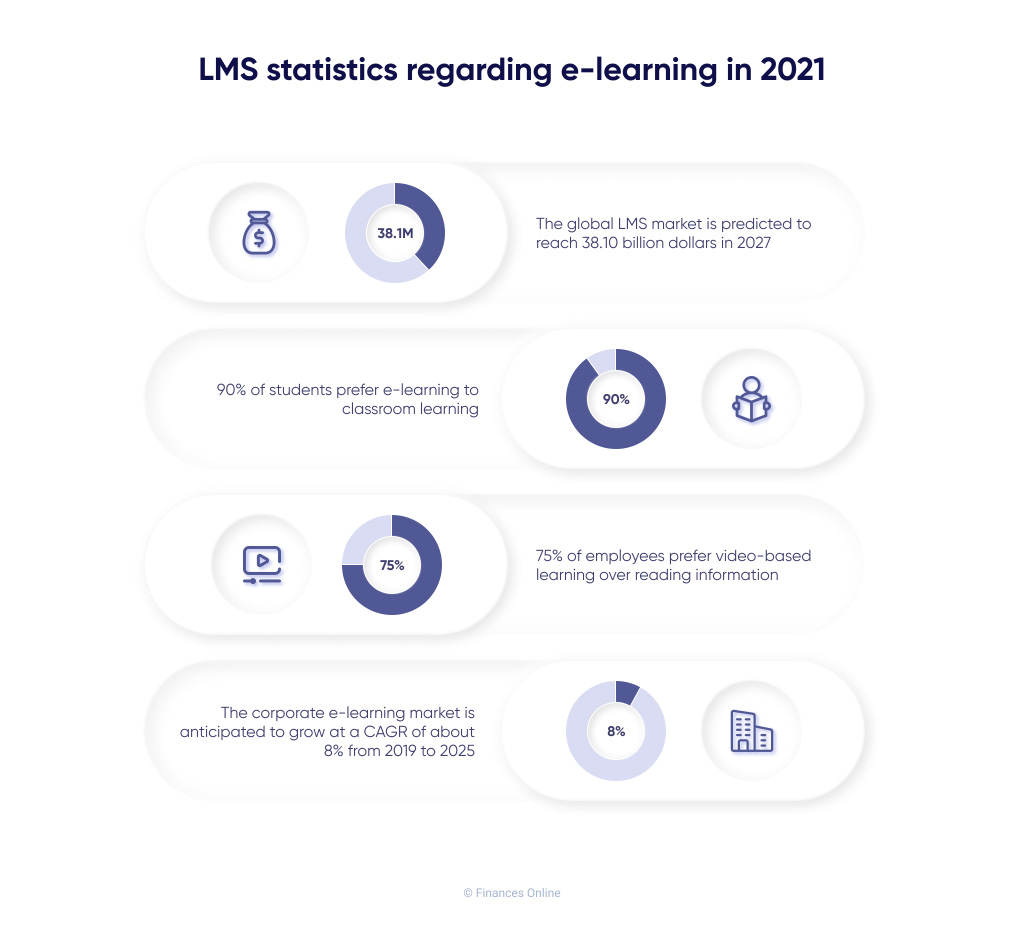
Learning Management System Development Process
If you have set your mind on creating a custom learning management system, it is time to examine the process of its development. Luckily for you, it is almost identical to the development process of any custom software, regardless of its type. So, you may already have an idea of its steps and peculiarities.
Step 1: Define the idea of LMS
At first, you have an abstract vision or a vague concept, and your task is to clarify it, make it more definite and understandable for your business partners, and the future development team. A clearly defined idea is more convincing for investors, so the startup has a higher chance of getting approval and funding from the board of directors, sponsors, or whoever you turn to for money.
It is also highly important to select target platforms for future LMS and e-learning service. Research the market, analyze the potential competitors or the capacities of your company to determine whether you need just a web application (aka LMS website) or a combination of a web app and a mobile app. A well-defined concept is easier to discuss with the development team, making the later planning stage much more effective and the whole learning management system development process easier and quicker.
Step 2: Pick or build your team
The choice of a team to realize your idea and create LMS that will be useful to your audience and profitable at the same time is crucial for the success of the whole endeavor. You can make your choice based on some ratings, average pricing, recommendations, or communication with potential candidates. Business reputation, solid experience, and a well-rounded portfolio are usually good indicators of reliability.
So, you may want to prefer development companies that have already established themselves on the market and have large portfolios of successful cases that preferably contain at least one LMS. Also, it is a good sign if a software development company has won some awards and has positive feedback from its clients.
Step 3: Select the required set of features
Now it’s time to finalize the functionality of your future LMS. Make a list of core and optional features and think about how to optimize and narrow it down. Keep in mind that each feature will take time and effort to implement and test it. So, the selected number of features will have a direct influence on the final price for your learning management system.
Also, create an additional list of useful features that you might want to include in your LMS after its release. It will help the development team to make provisions for easier implementation of those additional features with subsequent software updates.
Keep in mind that LMS functionality will also depend on what kind of learning materials you would like to use as more digital formats incorporated into the system will require time and resources to be integrated successfully. One of the examples is the virtual classroom. Typically such software has AI/ML and AR/VR elements to it and proficiency in such innovative technology may narrow down the list of vendors capable of delivering a fully-functional digital product. The timeline required to create LMS with virtual classroom features will also be longer and a business owner should be prepared for that.
Step 4: Choose the tech stack
The development team will propose the technology stack based on the chosen functionality and target platforms for your LMS. Along with the selected features, the technology stack impacts the cost of the custom LMS development, so choose wisely. Many learning management systems are built using cloud-based solutions such as Amazon Web Services that offer a number of benefits and may reduce the time and costs required for their development.
Keep in mind that different operating systems require different tech stacks. That’s why it might be better to choose the most optimal target platform and add support for others at some point after the release. As a starting option, a cloud-based LMS would be a good choice with great potential. Another popular variant nowadays is a SharePoint-based LMS.
If we’re talking about software for mobile learning and the budget is tight, you can go for cross-platform development choosing tools like Flutter or React Native. This way you’ll be able to create an LMS platform that will work both on Android and iOS devices without having to spend twice as much on native development.
At this point, the development team has enough information to estimate the cost and time required to build an MVP or a final product.
Step 5: Plan the structure and design
You should not underestimate the importance of UI/UX design for the success of a software product. The social learning and teaching routines are already difficult and sometimes frustrating; there is no need to overcomplicate them with clunky design. A convenient LMS will make the educational process smooth and efficient both for mentors and students
As a brand product, a learning management system should include corporate colors and symbols. However, don’t forget that some colors and patterns may add strain to users’ eyes making it difficult to concentrate on the screen. So if you’re caught between staying true to your brand identity or making the interface more user-friendly, always go for the audience’s comfort. It is an investment in higher retention rates.
Step 6: Build an MVP
An MVP is a functioning version of the product with the minimum amount of features. It conveys the idea of the final product, so you may use it to promote your LMS before the investors to get additional funding. You can also ask a test group of users to explore the features of your app and share the experience. This information is valuable for further improvements and additions before the MVP becomes the final product.
Step 7: Ensure proper testing
To provide the best possible user experience, the development team should perform as many tests as needed to reveal the bugs and fix them. With the help of QA specialists, your learning management system should be ready to make the best impression at its release.
Quality is always the highest priority. Just wait patiently until all the bugs are found and squashed. Otherwise, your learning management system will crash and burn instead of ensuring the proper level of customer education, bringing knowledge and money.
Step 8: Promote the release and post-release support
If you have the patience and money to get to this stage, congratulations! Ensuring the highest quality is crucial for your newly built LMS. However, its release should be accompanied by clever promotional activity to draw attention to your software product and showcase its benefits. Don’t forget the importance of marketing. Use the social networks to prepare or even tease potential users, make them count the days before the release.
Another crucial topic is post-release support. Keep your learning management system live by adding new features, covering new platforms, and reaching new audiences.
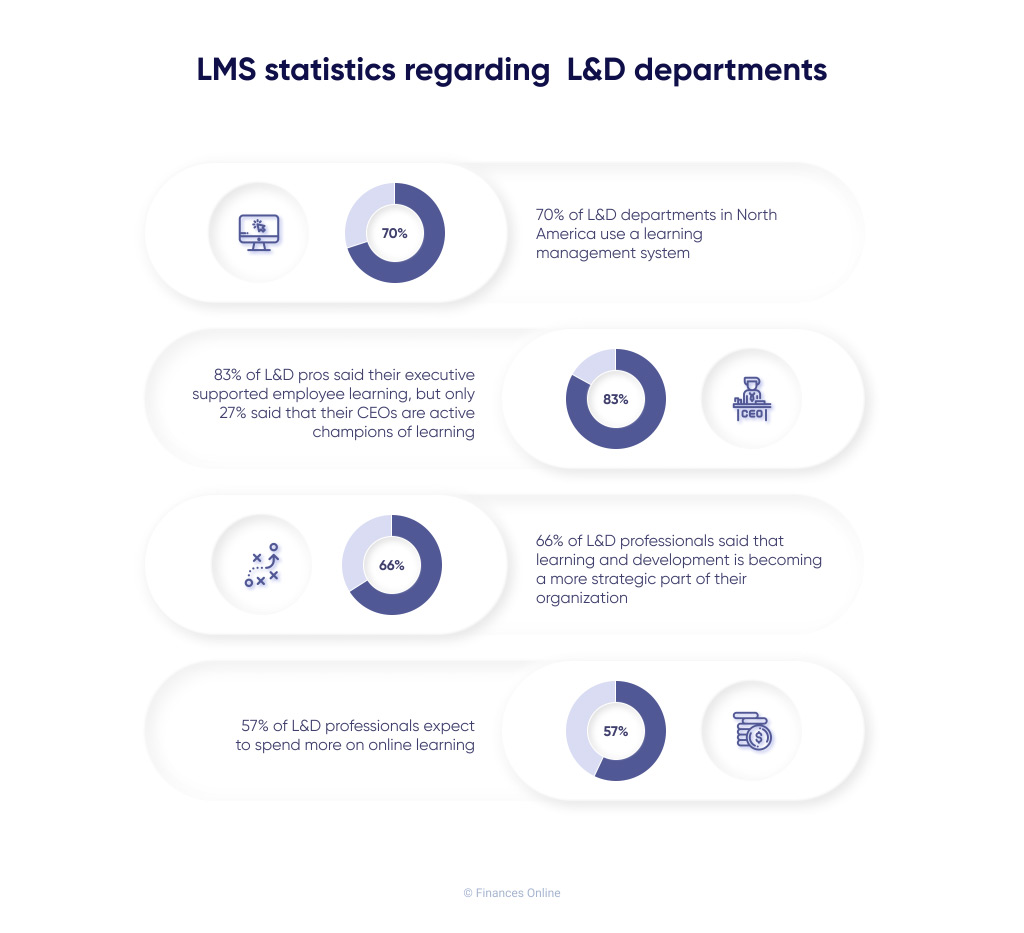
Custom LMS Development Pricing
The final price of LMS implementation, in many cases, is a determinant of whether or not it’s worth being invested in. Especially when the limited budget is the harsh reality. It’s safe to say that a learning management system development is on the pricier side of the spectrum as it requires both time and high-quality experts to implement. But is there a specific number? The answer is multilayered.
Which Factors Form the Price of the Custom LMS?
Let’s make it clear from the get-go: no IT company can tell you the exact price for the custom learning management system development right away. If it can, then it’s a huge red flag as the solution that has been offered to you is by no means custom.
The LMS development process is complex and requires a lot of research to make sure the product meets the customer’s requirements. Therefore, a reliable contractor will ask numerous questions about the client’s vision and preferences and will give an approximate price estimation only after an interview.
The number of aspects influencing the LMS development price includes (but isn’t limited to) the following:
- The number of desired features and overall functionality
- The chosen tech stack
- Design complexity
- Timeframe
- The number of platforms
All of these factors influence the price directly. The more features you want to see in your LMS, the more money you’ll have to lash out on it. The more complex design you choose, the more expensive it will be. The more platforms you need to cover, the higher the expenses.
But it also works the other way around. If your budget is strictly limited, you can always opt for a cheaper tech stack or postpone the development of certain optional features. Dialogue is the key here. A trustworthy contractor is always ready to offer you some affordable options without compromising the quality of the LMS.
How Much Does It Cost to Develop a Custom LMS?
Even though the price of building a custom LMS from scratch depends on too many aspects, it’s still possible to define the average market price.
For a web-based LMS, it’s safe to suggest about a 450-500 hours MVP development cycle (including business analysis, the actual development, design, third party services integration, and QA). The average hourly rate depends on the contractor’s location and expertise. For example, in Ukraine, it’s between $20 and $50 and in the US it will be $80-200. If you want to know more about the price setting, check our article about the prices for the web app development.
As for a mobile version of LMS, the price may vary depending on the platform (iOS, Android, or cross-platform) and the contractor’s location once again. The hourly rates for mobile software developers fluctuate from $30-100 in Eastern Europe to $50-250 in the US. Therefore, a mobile LMS development price may start from $40,000 and go way up to $120,00 or even more depending on your requirements. Take a look at our article about mobile apps pricing to get a better understanding of the subject.
Conclusion
The importance of education remains undisputed in the business world. That’s why successful people consider the money spent on education a highly beneficial investment that will result in financial profits and personal development. If you have an idea of a learning management system, contact us, and our specialists will provide the consulting and development services to realize your concept.





